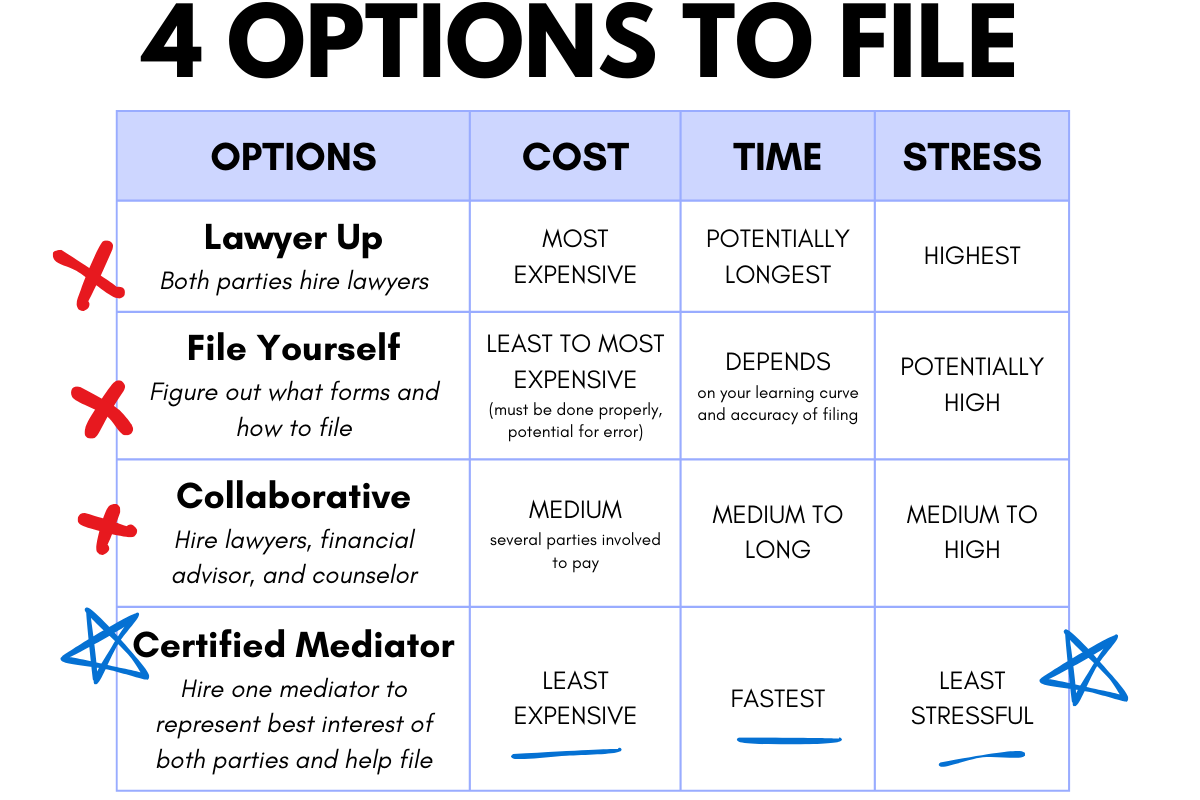Filing for Divorce in Florida
You have options when filing for divorce in Florida. Discover why using Miller Mediation can be the best option for you.


Filing for divorce in Florida involves several steps, which can vary depending on whether you are pursuing a simplified or regular dissolution of marriage.
Residency Requirements
Before filing, it is essential to meet the residency requirements. At least one of the spouses must have lived in Florida for at least six months prior to filing the petition.
Types of Divorce
Simplified Dissolution of Marriage
This process is available for couples who:
-
-
- Have no minor or dependent children.
- Are not pregnant.
- Have no unresolved financial obligations.
- Have agreed on the division of property and assets.
- Are not seeking alimony.
- Both parties must agree to the terms of the divorce and give up their right to a trial and appeal.
-
Steps for Simplified Dissolution
-
-
- File the Petition: Both parties must appear together at the courthouse, present valid identification, and submit the necessary paperwork, including a marital settlement agreement.
- Attend a Hearing: A brief hearing will be held approximately 30-90 days after filing, where a judge will review the paperwork and sign the final judgment.
-
Regular Dissolution of Marriage
This process applies to all other circumstances, including couples with children, marital assets, or unresolved issues.
Steps for Regular Dissolution
Step 1: Filing the Petition
-
-
- The petitioner files a petition for dissolution of marriage with the circuit court, stating that the marriage is “irretrievably broken” and outlining what is requested, such as child custody, alimony, or property division.
-
Step 2: Answering the Petition
-
-
- The respondent has 20 days to file an answer, which can be contested or uncontested. If no answer is filed, the petitioner can file a motion for default.
-
Step 3: Additional Paperwork
-
-
- Both parties must submit additional forms, including financial affidavits, child support information, and parenting plans if applicable.
-
Step 4: Discovery
-
-
- Both spouses must provide financial details, such as bank statements, tax returns, and pay stubs, to determine fair alimony, child support, and property division.
-
Step 5: Mediation
-
-
- Mediation is often required to resolve outstanding issues. This process involves a neutral third-party mediator to help parties reach an agreement.
-
Step 6: Parenting Plan
-
-
- If there are minor children, a parenting plan must be created to outline custody, time-sharing, and visitation rights.
-
Step 7: Finalizing the Divorce
-
-
- A judge signs the “order of dissolution” or Final Judgment after all parameters have been negotiated and agreed upon or mandated by the court. This may involve drafting the judgment and addressing any necessary steps to comply with the order, such as transferring titles or initiating alimony and child support payments.
-
If this process seems like a lot, it is.
Although you can attempt it yourself, you’ll save time, money, and stress by working with Miller Mediation through this process.
Helpful Links
- Online Divorce Mediation in Florida – Fast, Affordable, and Private
- Benefits of Divorce Mediation
- Cheapest way to divorce in Florida
- Drama Free Divorce (a free e-book)
- Filing for divorce in Florida
- Flat-Fee Divorce Mediation – No Hourly Billing, No Surprises
- How to file for divorce in Florida without an attorney
- Christian Divorce Mediation – Faith-Based Conflict Resolution

